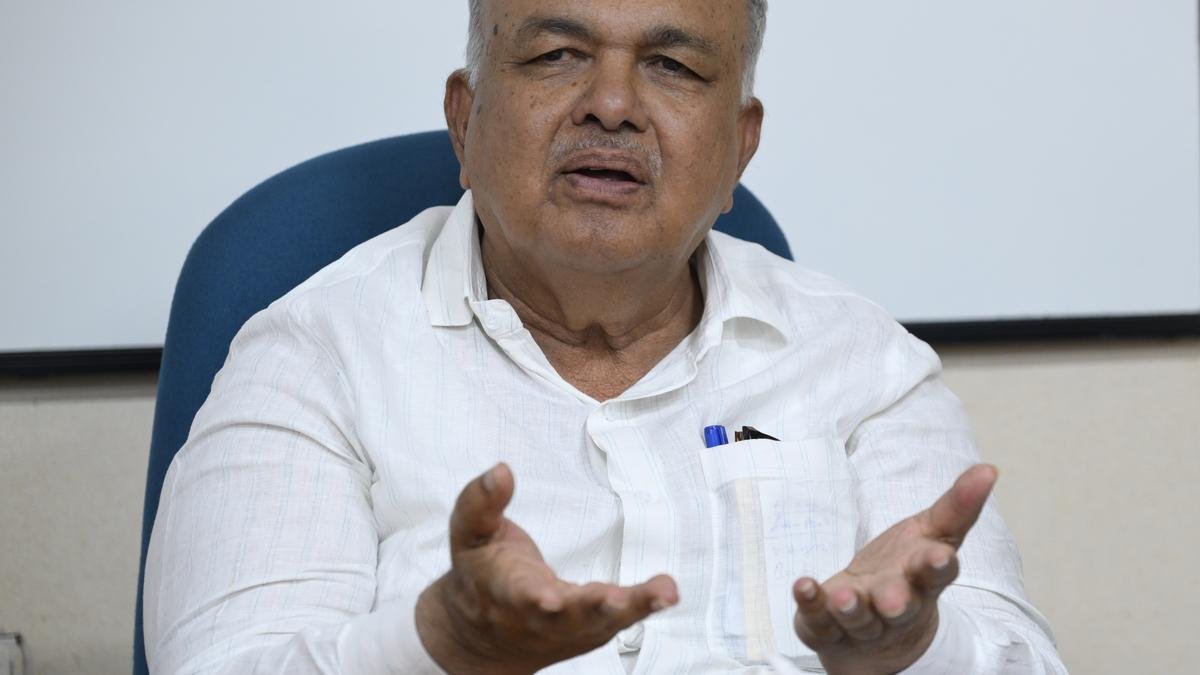“The Shakti scheme has resulted in a significant increase in bus ridership, with daily numbers rising from 80,000 to over 1,00,000. To address the bus shortage issue, the State planned to introduce 6,000 new buses, of which 3,900 have been delivered and the remaining 2,100 are on the way. The pandemic caused delay and cancellation of 3,800 buses, but they are now being reinstated alongside new additions,” said Transport and Muzrai Minister Ramalinga Reddy.
Participating in The Hindu’s reader connect programme – #THtalksBengaluru – on Tuesday, he spoke about taking on the challenge of implementing the Congress party’s manifesto guarantee of the Shakti scheme, which provides free bus travel to women in government buses. The scheme has achieved its goal of empowering women, with a total of 2,66,72,12,266 women having travelled on State-run transport corporations so far.
Fielding a wide array of questions from readers of The Hindu, Mr. Reddy provided a comprehensive overview of the State’s transport policies, challenges, and ongoing initiatives. Central to Mr. Reddy’s discussion was the Shakti scheme, which is he said is more extensive in Karnataka compared to similar programmes in Tamil Nadu, Delhi, and Punjab. Of the State’s 26,000 buses, 21,000 now provide free travel to women.
Responding to concerns that the Shakti scheme was launched without a corresponding increase in bus numbers and loss to the revenue of RTCs, Mr. Reddy emphasised that transport corporations are designed to serve the community rather than generate profit. “Approximately 40% of the buses serve rural areas, often operating at a loss, similar to public sectors like health and education,” he said.
Mr. Reddy elaborated on improving the number of buses while being critical of the Central government’s FAME scheme. “Previously, funding was provided through the JNNURM scheme, which involved contributions from transport corporations, the State, and the Central government. With the discontinuation of this scheme, the Central government’s FAME scheme now supports the promotion of electric vehicles. However, funding for electric buses has decreased from ₹40 lakh to ₹15 lakh per bus,” he added.
In terms of infrastructure, he discussed several ongoing projects. The Kempegowda Bus Station in Bengaluru, which handles over 10,000 schedules daily, is undergoing expansion owing to increased traffic. The expansion project, initially funded through a ₹1,600 crore loan, aims to enhance the station’s capacity, he explained.
Demand for metro feeder services
Mr. Reddy said the department has responded to requests from Namma Metro authorities by providing feeder services on key routes such as Whitefield, JP Nagar, and Jayanagar.
The issue of truck and lorry parking facilities was also discussed by Mr. Reddy. “The State is developing truck terminals in various locations, including Bengaluru, Mysuru, Dandeli, and Hubballi. These projects aim to improve parking and ancillary facilities. The State is also enhancing online services, with KSRTC’s digital bookings accounting for nearly 90% of transactions,” he said.
Employee welfare
Mr. Reddy acknowledged ongoing challenges related to salary arrears for KSRTC employees. “The previous government left a financial strain, which has affected timely settlement of arrears. Efforts are under way to resolve these issues, with a focus on improving compensation and benefits for employees,” he alleged.
On administrative issues, Mr. Reddy noted a reduction in the influence of middlemen in RTOs, thanks to various measures. The department is working to eliminate their role completely and has introduced services such as delivering driver’s licenses by post, he noted.
Future plans
Mr. Reddy responded to several public concerns, including issues with High Security Registration Plates (HSRPs) and bus breakdowns. HSRP implementation, mandated by the Central government, has faced delays, but deadlines have been extended, he said. For bus safety, Mr. Reddy noted that efforts are being made to train drivers and reduce accidents, though some issues are attributable to other road users.
The Hindu received a large number of questions for this #THtalksBengaluru edition. Due to time constraints, not all questions could be posed to Mr. Reddy. However, all questions, suggestions, and feedback from readers were shared with the Minister, who has promised to review and address them.
Muzrai Department and temple modernisation
Minister Ramalinga Reddy’s discussion also covered the Muzrai Department, his other portfolio, and its efforts to modernise temples under its control. “Karnataka has over 1,80,000 temples, with 35,000 managed by the Muzrai Department. Among these, 205 are classified as A grade temples with annual incomes exceeding ₹25 lakh,” he said, while highlighting efforts to improve facilities at high footfall temples such as Huligamma in Koppal and Savadatti Yellamma in Belagavi.
“New authorities are being set up to oversee these improvements, including better amenities for devotees and updated facilities,” he said.
The Minister also addressed concerns about the allocation of funds, stating that no money from the Muzrai Department has been diverted to other uses. He emphasised that the Karnataka Rajya Dharmika Parishad legislation ensures that funds remain within temple accounts and are used solely for their needs.






